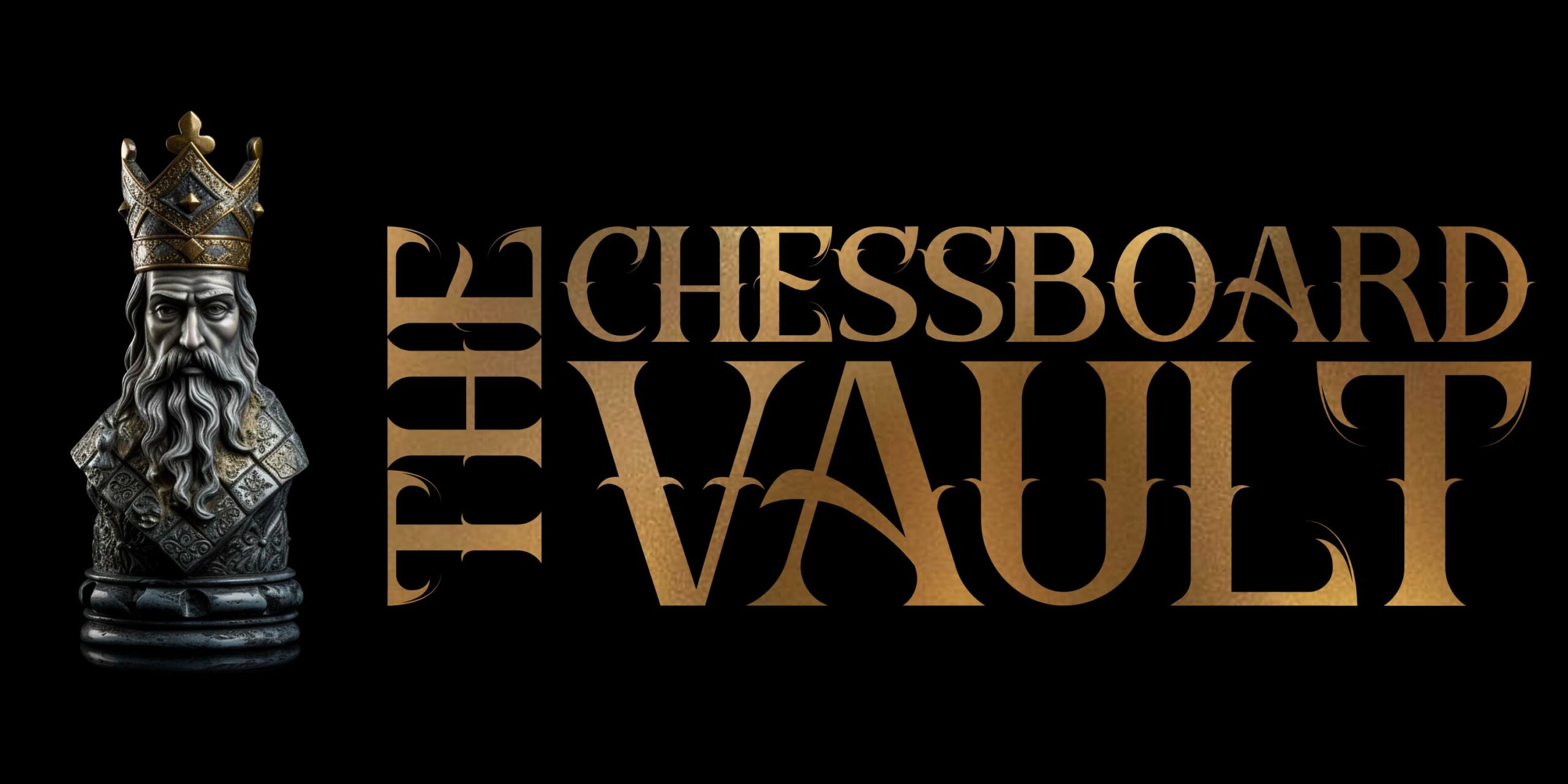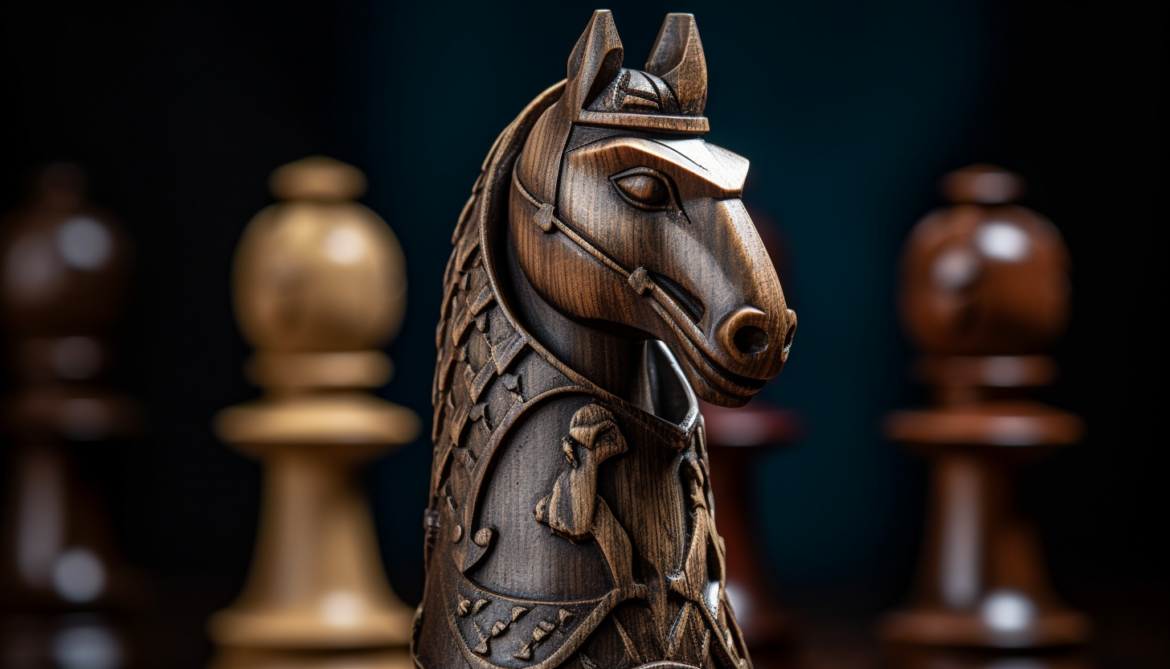The ancient game of chess, with its intricate strategies and nuanced gameplay, holds a charm that has captivated minds for over a millennium. What many enthusiasts might not fully realize, however, is that the game’s rich tapestry of moves and countermoves is only half the story. The pieces themselves, each with its distinct form and function, carry tales of evolution that mirror the ebb and flow of civilizations. What are the origins of chess pieces?
The origins of chess are shrouded in mystery, but historians generally trace its beginnings to the Indian game of chaturanga, played around the 6th century AD. This precursor of chess was a reflection of Indian military strategy, with its infantry, cavalry, elephants, and chariots. Over time, as the game traveled westward through Persia and into the Islamic world, these pieces evolved both in name and form, adapting to the cultural and aesthetic sensibilities of the regions they touched. By the time chess reached Europe, these pieces had transformed into the familiar rook, knight, bishop, and pawn we recognize today.
The queen and king, central to the game, have their own unique narratives. The king, always crucial, has remained relatively unchanged in its significance. The queen, on the other hand, underwent a dramatic transformation in Europe during the late Middle Ages, evolving from a relatively weak piece to the most powerful on the board, possibly reflecting the growing influence of powerful queens in European politics.
Every chess piece, from the humble pawn to the majestic queen, tells a tale of adaptation, cultural exchange, and transformation. As you set up your board for your next game, take a moment to appreciate the centuries of history each piece carries, a silent testament to the enduring allure of this timeless game.
Origin of the Chess Pawns
The tale of the pawn, like the game of chess itself, is one woven through the fabrics of diverse cultures, evolving over centuries and adapting to the shifting landscapes of history.
The story begins with the ancient game of chaturanga, played in India around the 6th century AD. Chaturanga, the precursor to modern chess, featured a piece called the “padāti” or foot-soldier, which would later be recognized as the pawn. This foot-soldier represented the infantry, the backbone of ancient armies, reflecting its foundational role on the battlefield.
As chaturanga traveled to Persia, it became known as “shatranj,” and the foot-soldier transformed into the “piyādeh.” The game’s journey continued westward, with the pawn acquiring new names in each culture it touched, from the Arabic “baidaq” to the Old French “paon,” which meant foot soldier and is the root of the English term “pawn.”
Throughout this evolution, the pawn retained its significance as the silent force, moving steadily forward. However, it was in medieval Europe that the pawn began to reveal a hint of its latent power. With the introduction of the “en passant” rule and the pawn’s ability to transform upon reaching the opposite end of the board, it became evident that this once-overshadowed piece held potential beyond its initial purpose.
Today, the pawn stands as a symbol of potential and transformation. While it may lack the immediate grandeur of the other pieces, its journey from a simple foot-soldier in ancient India to a pivotal player on the modern chessboard serves as a poignant reminder: often, it’s the quietest figures that hold the most profound stories and strengths.
Origin of the Rooks
With its straight-line dominance, the rook’s origins and transformation over time are as intriguing as its formidable presence in the game.
The saga of the rook begins in India with the game of chaturanga, the recognized ancestor of modern chess, played during the 6th century AD. In chaturanga, the rook was represented by a chariot, known as the “ratha.” The chariot was a prominent symbol of military might in ancient warfare, known for its speed and the devastating impact it could deliver on the battlefield. This representation was not just symbolic; it closely mirrored the movement and power the piece held on the board.
As the game found its way to Persia, the “ratha” transformed into the “rukh,” which still implied a chariot but began to adopt a slightly different cultural significance. It is from this term “rukh” that the modern English name “rook” is derived. When the Moors brought chess to Spain, and as the game spread throughout Europe, the rook’s representation shifted once again. From the formidable chariot, it became symbolized as a castle or tower, which epitomized strength, stability, and strategic importance in medieval European warfare.
Today, the rook’s transformation from chariot to castle on the chessboard serves as a testament to the game’s adaptability and the intermingling of cultures. As it casts its unyielding gaze across the board, ready to strike down any who stand in its path, the rook remains a powerful reminder of chess’s storied past and the timeless strategies it brings to the minds of players around the world.
Origin of the Knights
Amidst the orderly rank and file of the chessboard, there emerges a piece known for its unique movement and undeniable valor: the knight. While other pieces traverse the board with linear precision, the knight’s L-shaped leaps echo the unpredictability and finesse of cavalry maneuvers on ancient battlefields. Delving into its origins reveals a tale of chivalry, warfare, and evolving symbolism.
The knight’s genesis is traced back to chaturanga, where it was represented as the “ashva,” the Sanskrit term for horse. In the vast terrains of ancient India, cavalry played a significant role, striking swiftly and changing the course of battles with their unexpected charges. The “ashva,” with its singular movements, emulated this strategic unpredictability on the chaturanga board.
As chaturanga gave way to the Persian game of shatranj, the “ashva” evolved into the “faras,” retaining its equestrian essence. Its essence was preserved even as the game journeyed westward. When chess entered the medieval European milieu, the knight’s identity intertwined with the growing ideals of knighthood and chivalry. The piece became emblematic not just of cavalry but of the very ideals of bravery, honor, and courtly virtue that knights of the time were expected to uphold.
The modern chess knight, with its distinct horsehead shape, remains a cherished symbol of the game’s rich lineage. Its unorthodox movement pattern serves as a testament to the piece’s historical roots, reflecting both military strategy and the age of chivalry. In every move it makes, every challenge it faces on the board, the knight reminds players of the gallant tales and diverse cultures that have shaped the world of chess over the millennia.
Origin of the Bishops
The bishop moves with a quiet authority, slicing diagonally through the battlefield in a manner that feels both elegant and elusive. Its origins and evolution, deeply interwoven with religious and cultural contexts, shed light on the game’s adaptation through different civilizations.
In ancient chaturanga, the predecessor of our modern chess, the piece that would become the bishop was represented by an elephant, known as “gaja.” This massive creature symbolized power and was a vital part of Indian armies. The elephant’s role in this early game did not directly mirror the diagonal prowess of today’s bishop, but it signified a unique form of strength and strategy.
As the game moved west into Persia and became shatranj, the “gaja” turned into “al-fil” or “the elephant” in Arabic. Yet, the West’s unfamiliarity with elephants posed a representation challenge. In medieval Europe, the imagery and understanding of this piece began to shift. Instead of trying to directly replicate the exotic elephant, Europeans adopted a piece that resonated more with their cultural and religious fabric: the bishop. With its mitre-shaped top, it symbolized the church’s influence in the corridors of power, subtly reflecting the significant role religion played during this era.
Today, the bishop, with its long-reaching diagonal moves, is a force to be reckoned with on the chessboard. Its transformation from a mighty elephant in ancient India to a religious figure in medieval Europe is not just a tale of a game piece, but a reflection of chess’s profound ability to absorb, adapt, and reflect the diverse cultures it encounters. Each diagonal move of the bishop carries the weight of this rich history, blending strategy with a legacy of adaptation.
Origin of the Queen
Within the grand theater of the chessboard, the queen stands with unparalleled prowess, a testament to both her evolved capabilities and her transformative journey through time. Unlike other pieces whose roles have seen a more linear progression, the queen’s metamorphosis is a tale of empowerment, culture, and intrigue.
In the game’s nascent form, chaturanga, the piece we recognize as the queen was far from the dominant force she is today. Known as the “mantri” or “counselor,” she served in a supportive, advisory role to the king, echoing the political realities of the time. As chess moved into Persia and became shatranj, this piece took on the identity of the “firz,” which also means counselor. Restricted in movement, the “firz” could only move one square diagonally, a far cry from the omnipotent queen of contemporary chess.
However, as chess blossomed in medieval Europe, the queen underwent a profound transformation, paralleling the rising power of several notable queens and female monarchs in European history. During the late Middle Ages, the game underwent multiple changes, and the queen’s abilities were dramatically enhanced. She was now free to move across the board in any direction, capturing her foes with unmatched agility and strength.
This evolution of the queen, from a limited counselor to the most dynamic piece on the board, is emblematic of societal changes and shifting perceptions of female authority and influence. Today, her formidable presence on the chessboard not only encapsulates the strategic depths of the game but also serves as a symbol of empowerment, embodying the countless stories and historical shifts that chess has witnessed over centuries.
Origin of the King
While other pieces have journeyed through transformative arcs, the king’s essence has remained largely unaltered, a beacon of constancy in a game defined by change.
Chaturanga, the ancestral form of chess birthed in India, featured the “raja” as the preeminent piece. Much like a real monarch, the “raja” was crucial, with the game’s outcome hinging on his fate. His movement was limited, but his significance was paramount. When chaturanga evolved into shatranj in Persia, the “raja” became the “shah,” translating directly to “king.” Its core mechanics and role remained intact, underscoring the universal reverence for monarchy across cultures.
As chess found its footing in medieval Europe, the “shah” was embraced as the king, the linchpin around which all strategies revolved. While Europe witnessed the rise and transformation of other pieces, particularly the queen, the king’s fundamental nature remained consistent. In the context of European medieval courts, where kings held both political and divine authority, the chess king’s singular importance was even more pronounced.
Today, the king’s movement is methodical and measured, limited to one square in any direction. Yet, it is around him that battles are waged, strategies devised, and victories determined. His unchanging nature over centuries speaks volumes about the universality of leadership symbols across different epochs and geographies. As players engage in the timeless dance of chess, the king’s presence serves as a poignant reminder of the game’s roots and the enduring allure of leadership and strategy.

